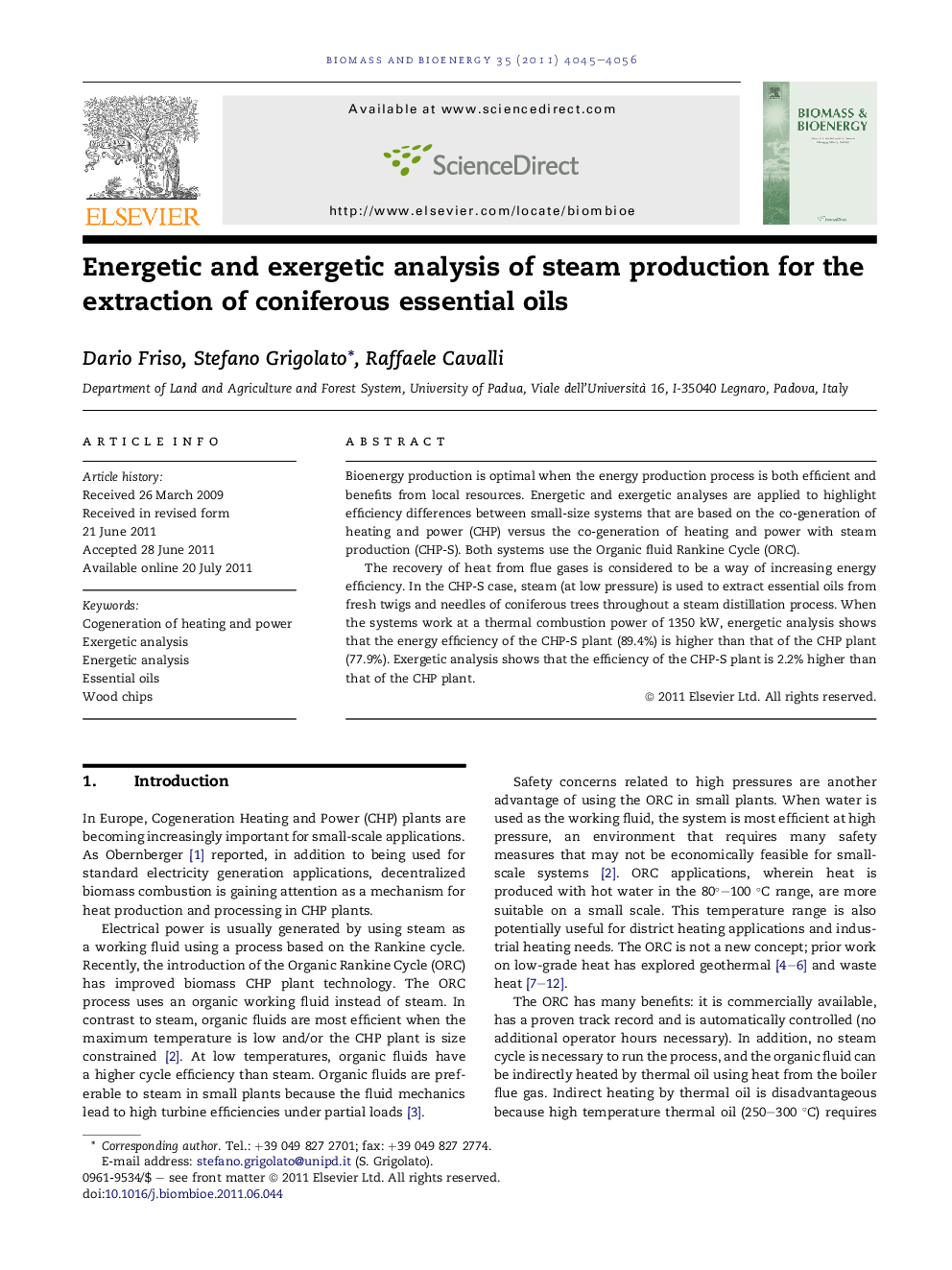| Article ID | Journal | Published Year | Pages | File Type |
|---|---|---|---|---|
| 677696 | Biomass and Bioenergy | 2011 | 12 Pages |
Bioenergy production is optimal when the energy production process is both efficient and benefits from local resources. Energetic and exergetic analyses are applied to highlight efficiency differences between small-size systems that are based on the co-generation of heating and power (CHP) versus the co-generation of heating and power with steam production (CHP-S). Both systems use the Organic fluid Rankine Cycle (ORC).The recovery of heat from flue gases is considered to be a way of increasing energy efficiency. In the CHP-S case, steam (at low pressure) is used to extract essential oils from fresh twigs and needles of coniferous trees throughout a steam distillation process. When the systems work at a thermal combustion power of 1350 kW, energetic analysis shows that the energy efficiency of the CHP-S plant (89.4%) is higher than that of the CHP plant (77.9%). Exergetic analysis shows that the efficiency of the CHP-S plant is 2.2% higher than that of the CHP plant.
► Bioenergy production is optimal when the energy production process is efficient. ► Energetic and exergetic analyses are applied to highlight efficiency differences between the co-generation of heating and power (CHP) versus the co-generation of heating and power with steam production (CHP-S). ► The recovery of heat from flue gases is a way of increasing energy efficiency. ► The energetic and exergetic analysis shows that the efficiency of the CHP-S plant is higher than that of the CHP plant.
